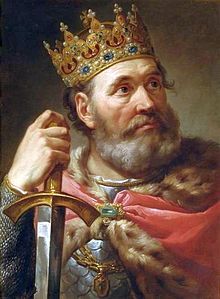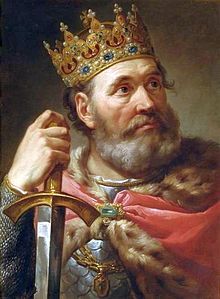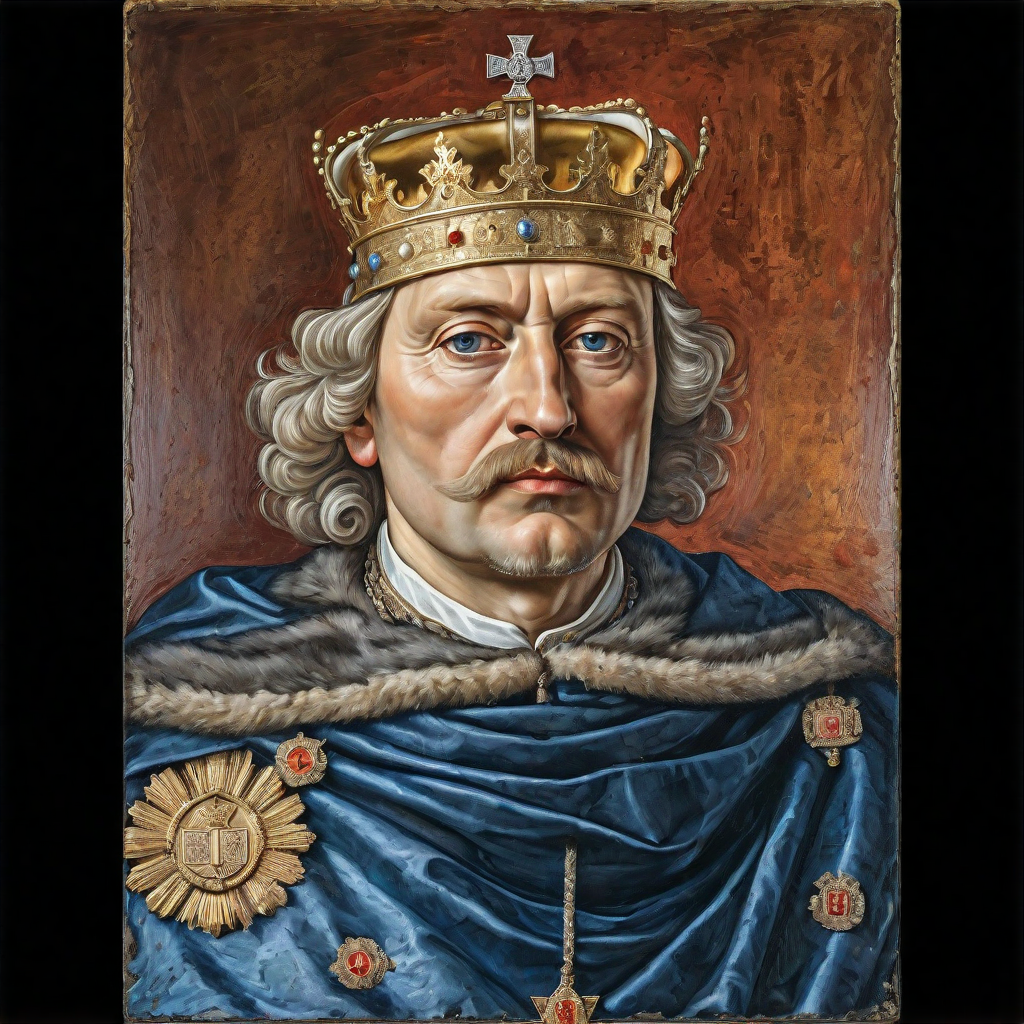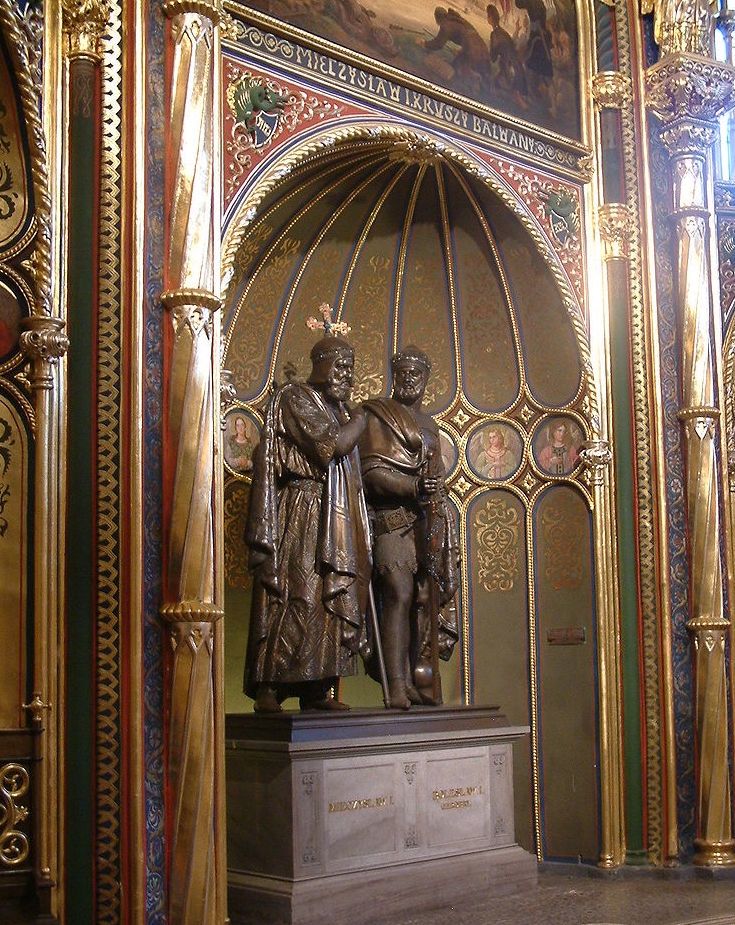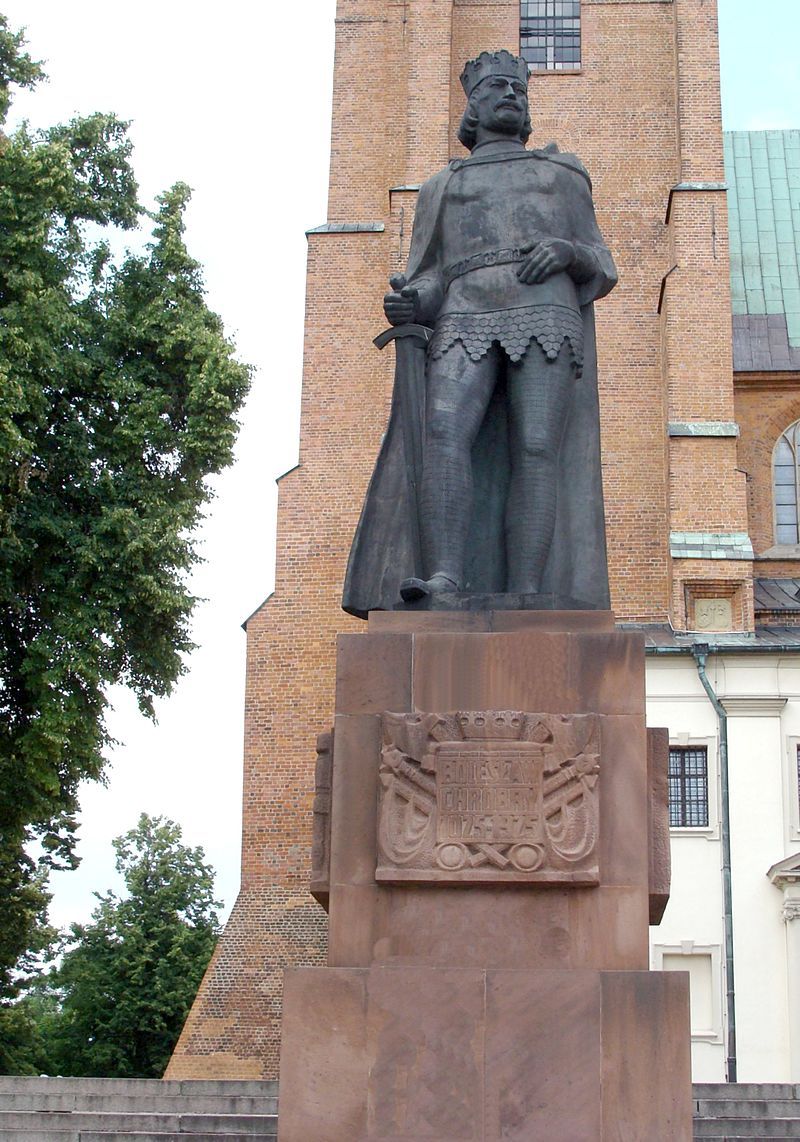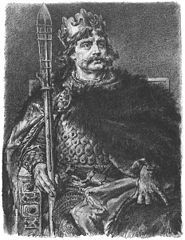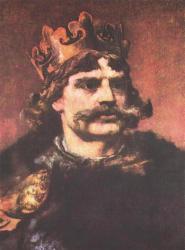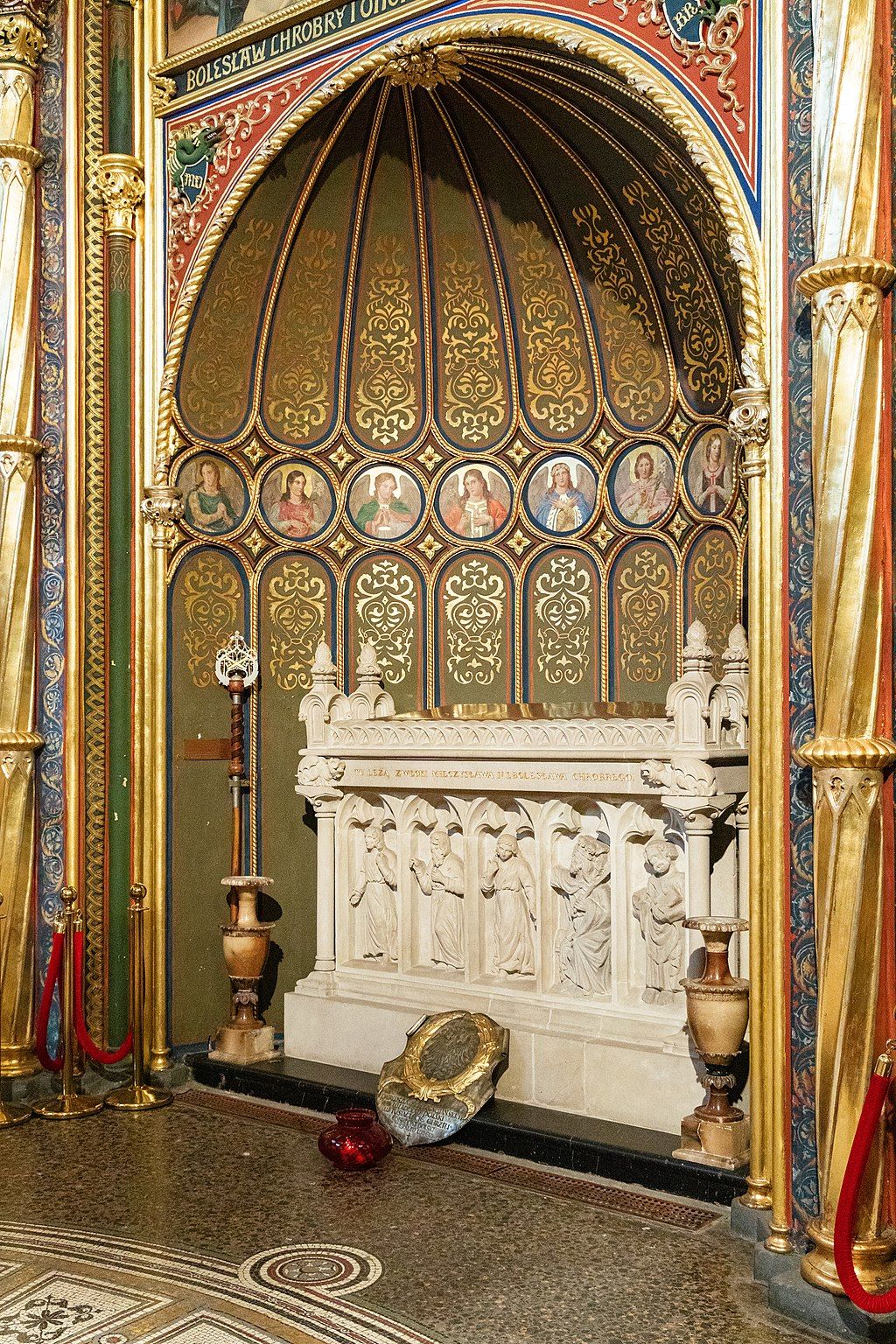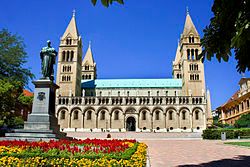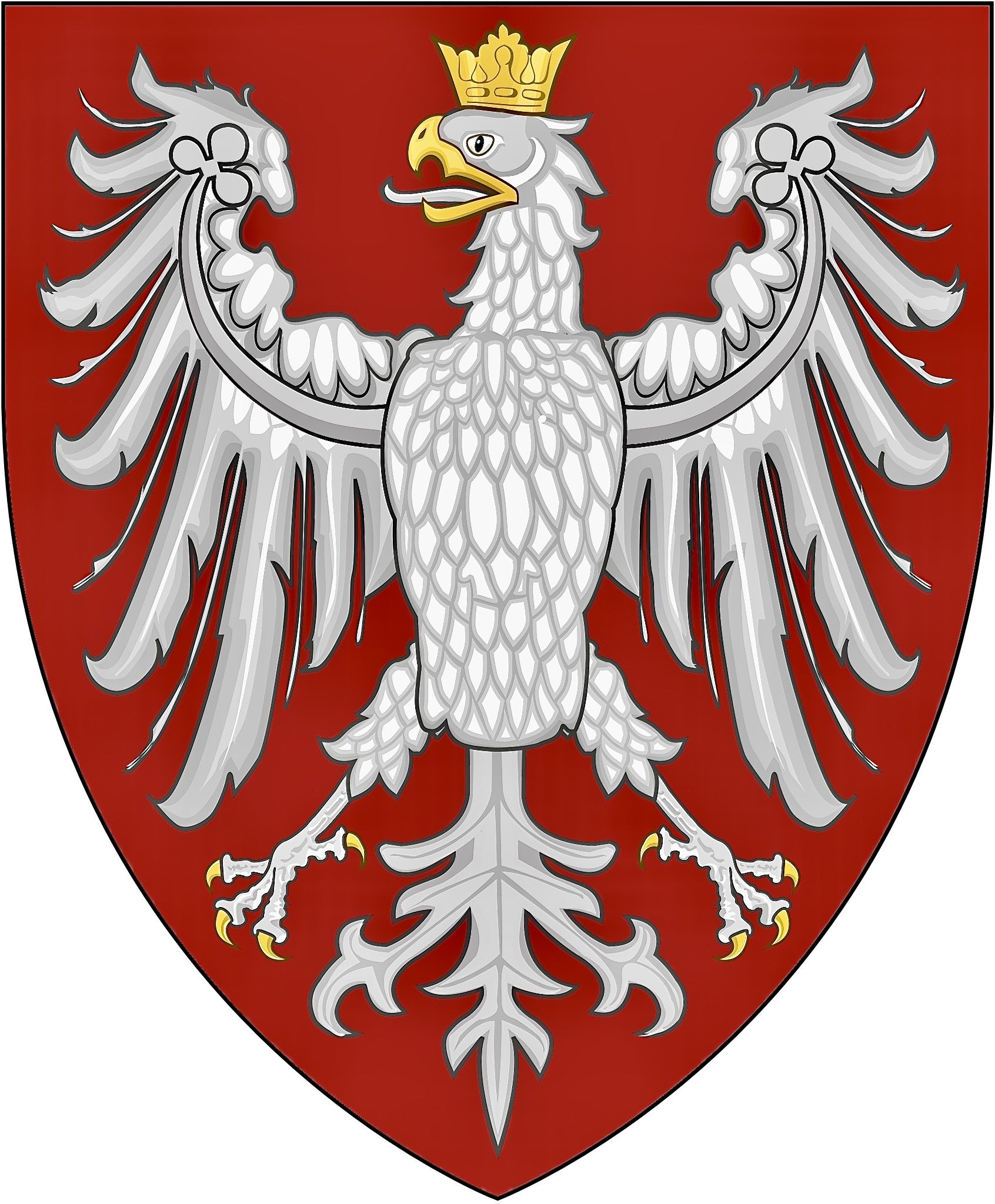Boleslaw I Chrobry (aka Boleslaw I the Brave or the Valiant) (Polish: Boleslaw I Chrobry, Czech: Boleslav Chrabrý) (967 – 17 June 1025), in the past also known as Boleslaw I the Great (Wielki), was a Duke of Poland from 992-1025 and the first King of Poland from 19 April 1025 until his death. He also ruled as Boleslav IV, Duke of Bohemia during 1002-1003.
He was the firstborn son of Mieszko I by his first wife, Dobrawa, daughter of Boleslav I the Cruel, Duke of Bohemia. He was named after his maternal grandfather.
Boleslaw I was a remarkable politician, strategist and statesman. He was able to turn Poland into one of the largest and most powerful monarchies in eastern Europe. Boleslaw conducted successful military campaigns to the west, south and east. He consolidated the Polish lands and conquered territories outside of modern borders of Poland such as Slovakia, Moravia, Red Ruthenia, Meissen and Lusatia as well as Bohemia. He was a powerful mediator in Central European affairs.
He was an ally of Holy Roman Emperor Otto III who may have crowned him rex, although opinions vary on that point. Following the death of Otto III in 1002, Boleslaw I conducted a series of successful wars against the Empire and Otto III's cousin and heir Henry II ending with the Peace of Bautzen in 1018. In the summer of 1018, in one of his most famous expeditions, Boleslaw I captured Kiev, where, according to legend, he notched his sword when hitting Kiev's Golden Gate. Later, a sword known as szczerbiec, meaning notched sword, would become the ceremonial sword used in the coronation ceremony of Polish kings.
Boleslaw I also managed to establish a Polish church structure with a Metropolitan See at Gniezno, independent of German Archbishopric of Magdeburg, which laid claims to the Polish area. During the famous Congress of Gniezno he was able to officially free himself of tribute to Germany and finally, in his most momentous act, he had himself crowned King, the first Polish ruler to do so.
He was an able administrator, establishing the so-called "prince's law", building numerous forts, churches, monasteries and bridges. Boleslaw I established the first Polish monetary system, of grzywna divided into 240 denarii, and minted his own coin. He is widely considered one of the most talented and accomplished of the Piast rulers.
Boleslaw I Chrobry (aka Boleslaw I the Brave or the Valiant) (Polish: Boleslaw I Chrobry, Czech: Boleslav Chrabrý) (967 – 17 June 1025), in the past also known as Boleslaw I the Great (Wielki), was a Duke of Poland from 992-1025 and the first King of Poland from 19 April 1025 until his death. He also ruled as Boleslav IV, Duke of Bohemia during 1002-1003.
He was the firstborn son of Mieszko I by his first wife, Dobrawa, daughter of Boleslav I the Cruel, Duke of Bohemia. He was named after his maternal grandfather.
Boleslaw I was a remarkable politician, strategist and statesman. He was able to turn Poland into one of the largest and most powerful monarchies in eastern Europe. Boleslaw conducted successful military campaigns to the west, south and east. He consolidated the Polish lands and conquered territories outside of modern borders of Poland such as Slovakia, Moravia, Red Ruthenia, Meissen and Lusatia as well as Bohemia. He was a powerful mediator in Central European affairs.
He was an ally of Holy Roman Emperor Otto III who may have crowned him rex, although opinions vary on that point. Following the death of Otto III in 1002, Boleslaw I conducted a series of successful wars against the Empire and Otto III's cousin and heir Henry II ending with the Peace of Bautzen in 1018. In the summer of 1018, in one of his most famous expeditions, Boleslaw I captured Kiev, where, according to legend, he notched his sword when hitting Kiev's Golden Gate. Later, a sword known as szczerbiec, meaning notched sword, would become the ceremonial sword used in the coronation ceremony of Polish kings.
Boleslaw I also managed to establish a Polish church structure with a Metropolitan See at Gniezno, independent of German Archbishopric of Magdeburg, which laid claims to the Polish area. During the famous Congress of Gniezno he was able to officially free himself of tribute to Germany and finally, in his most momentous act, he had himself crowned King, the first Polish ruler to do so.
He was an able administrator, establishing the so-called "prince's law", building numerous forts, churches, monasteries and bridges. Boleslaw I established the first Polish monetary system, of grzywna divided into 240 denarii, and minted his own coin. He is widely considered one of the most talented and accomplished of the Piast rulers.
Family Members
Advertisement
Advertisement
